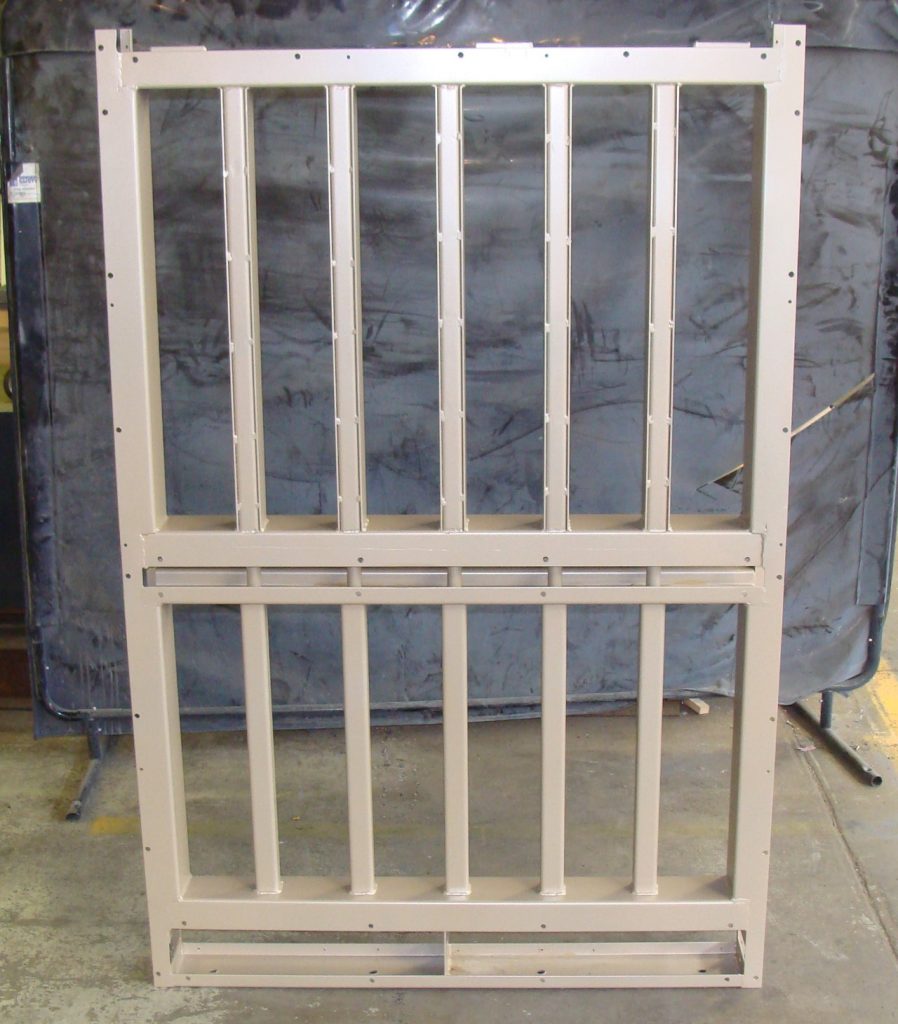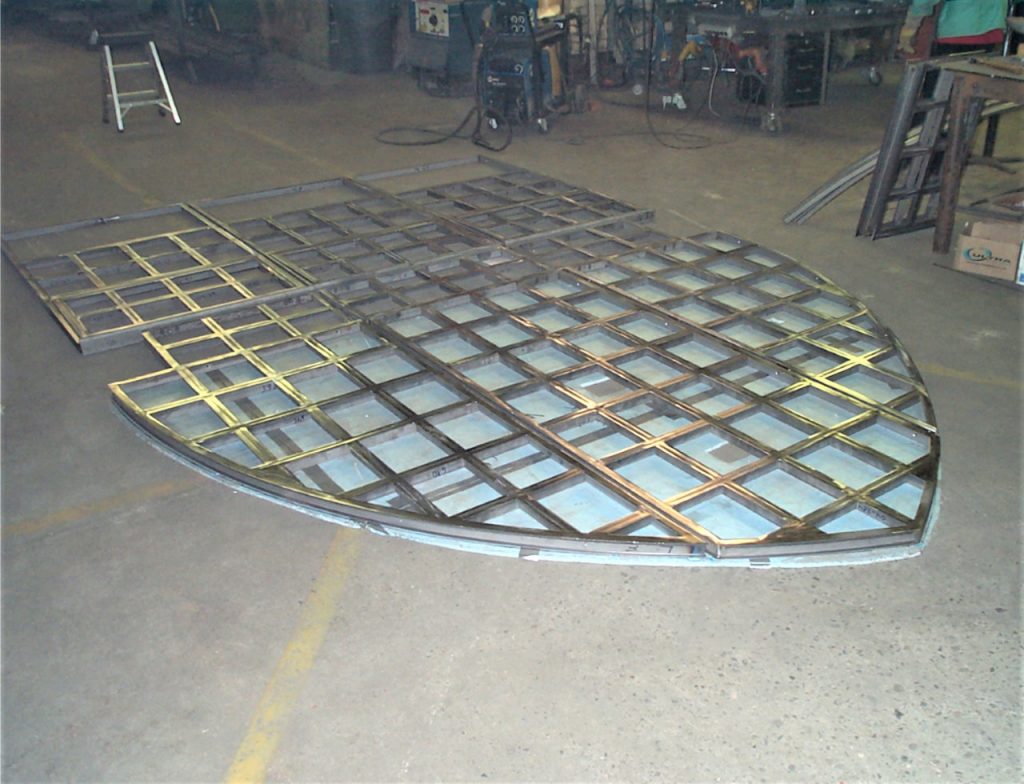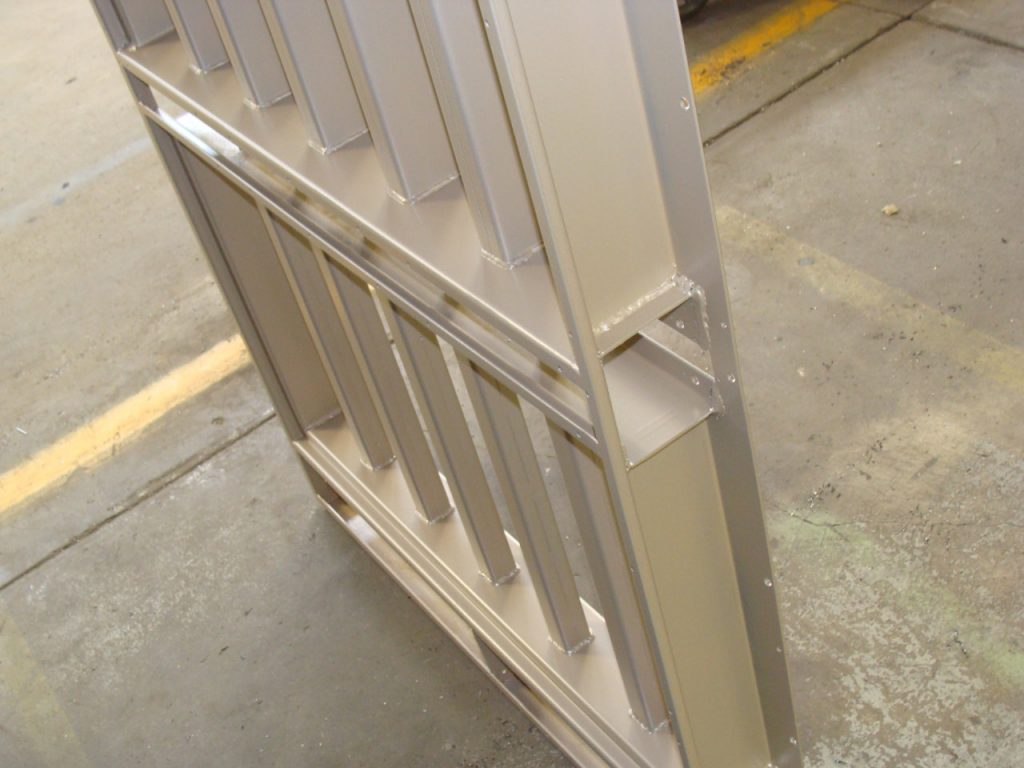When it comes to designing detention and correctional facilities, every element counts, and this is especially true for doors and windows. As experts in steel window manufacturing, we understand the complexities and unique requirements of creating secure yet humane environments for inmates. In this article, we delve deep into the world of prison window systems, providing architects with essential insights for designing correctional facilities that balance security measures with the rehabilitation needs of those within its walls.
The Role of Windows in Correctional Design
In the realm of detention centers and jails, windows are far more than just architectural elements; they represent a crucial intersection between security, humanity, and functionality. The design of prison cell windows can influence everything from inmate mental health to the facility’s overall safety. So, let’s embark on this journey to explore how the right window systems can make a significant difference in the correctional environments.
Understanding the Unique Requirements of Correctional Facility Windows
Safety and Security Considerations
In the world of correctional and detention facilities, the primary concern is always safety and security. Here, windows are not just openings for light; they are potential vulnerabilities. Imagine a window in a prison cell like a knight in armor; it needs to be robust and impenetrable. The use of security glazing and reinforced frames ensures that these windows are not the weak links in the facility’s defense.
Balancing Natural Light and Inmate Well-being
However, it’s not all about fortification. There’s a human element in design that can’t be ignored. Windows in detention centers are not just about keeping inmates in; they’re also about letting the light of the outside world in. Natural light plays a significant role in mental health and overall well-being. It’s a delicate balance – like walking a tightrope between the fortress and the sanctuary.
Durability and Tamper-Resistance
Durability is another cornerstone of prison window design. These windows must withstand not just the test of time but also the challenges posed by the inmates. Tamper-resistant features are crucial – think of it as making the windows not just strong but also smart.

Material Selection for Maximum Security
The Superiority of Steel
When it comes to material selection, steel stands out as the champion in prison design. Why steel, you ask? It’s simple: steel is synonymous with strength. In a place where strength is not just desired but required, steel windows come as the obvious choice.
Comparing Materials
| Material | Pros | Cons |
|---|---|---|
| Steel | High strength, durability | Higher cost |
| Aluminum | Lightweight, corrosion-resistant | Less strength |
| Reinforced Glass | Visibility, natural light | Can be more vulnerable |
Maintenance and Longevity
In the long-term scenario, steel windows offer more than just strength. They are a promise of longevity and low maintenance, much like a reliable old truck that keeps running year after year. Their corrosion resistance ensures that they don’t just survive but thrive in challenging environments.
Design Considerations for Architectural Integrity

Integrating with Facility Design
The design of correctional facilities isn’t just about function; form plays a crucial role too. Windows must align with the overall aesthetic vision of the facility. It’s like fitting pieces into a puzzle – each element, including windows, must come together to create a cohesive whole.
Customization for Different Styles
The versatility of modern steel windows allows for customization to fit various architectural styles, from the traditional prison look to more modern, humane designs. It’s not just about the bars; it’s about blending strength with style.
Aesthetics and Morale
The aesthetics of a facility, including its windows, can influence the morale of both staff and inmates. A well-designed space, illuminated by thoughtfully designed windows, can create an environment that supports rehabilitation and fosters a sense of normalcy.
Innovative Security Features in Modern Window Systems
Advanced Locking Mechanisms
In the realm of detention facility windows, security is paramount. Modern systems incorporate sophisticated locking mechanisms, akin to a high-tech bank vault. They are designed to be foolproof, ensuring that breaches are a thing of the past.
Integration of Technology
The incorporation of technology into window systems has revolutionized security measures in correctional settings. Features like sensors and alarms are not just add-ons; they are essential components that turn windows into vigilant guardians of security.
Case Studies: Security Innovation
Consider the advancements in institutions like Alcatraz or newer high-tech facilities. Their window designs are a testament to how the right blend of materials and technology can create an almost impenetrable barrier, combining physical strength with smart surveillance.

Compliance with Legal and Safety Standards
Building Codes and Regulations
Navigating the labyrinth of building codes and safety regulations is a crucial aspect of window design in correctional facilities. Each prison or jail must adhere to stringent standards that dictate everything from the size of the window to its resistance to impact.
Fire Egress and Emergency Protocols
Imagine being trapped in a room with no way out during an emergency. That’s a scenario we aim to avoid. Hence, windows in detention facilities must comply with fire egress and emergency response requirements, ensuring that safety is never compromised.
Accessibility and ADA Compliance
Even in the strictest of environments, accessibility cannot be overlooked. Compliance with the Americans with Disabilities Act (ADA) ensures that facilities are not just secure, but also inclusive.
Energy Efficiency and Sustainability
Eco-Friendly Design
In today’s world, the environmental impact of construction is a growing concern. Energy-efficient window designs are not just good for the planet; they also cut down on operational costs. It’s like killing two birds with one stone – saving money while being environmentally responsible.
Sustainable Manufacturing
Sustainable practices in manufacturing and installation of prison windows mirror a commitment to the planet. It’s about ensuring that the built environment contributes positively to the world outside the prison walls.
Carbon Footprint Impact
The choice of windows can significantly impact the facility’s carbon footprint. Efficient designs lead to lower energy consumption, creating a ripple effect that benefits the broader environment.
Installation and Maintenance Best Practices
Installation Techniques
The installation of prison windows is a task that requires precision and expertise. It’s akin to a surgical procedure, where every step matters and precision is key.
Maintenance Schedules
Regular maintenance and inspection ensure that window systems remain in top-notch condition. It’s like a regular health check-up for the windows, ensuring they are always fit for purpose.
Training for Emergency Operations
Equipping staff with the knowledge to handle emergency window operations is crucial. It’s about being prepared for any scenario, ensuring that when push comes to shove, the staff knows exactly what to do.
Future Trends in Detention Facility Window Design
Emerging Technologies
The future of prison design is bright with emerging technologies. Imagine windows that adjust their opacity for privacy or contain integrated screens displaying rehabilitative content. This isn’t science fiction; it’s the future of correctional environments.
Predictions for Design Trends
As we move forward, expect to see a shift towards more humane and rehabilitative designs in correctional and detention facilities. This means windows that not only secure but also heal, bridging the gap between confinement and reintegration.
Windows in Inmate Rehabilitation
The role of windows in rehabilitation is evolving. More than just barriers, they are becoming mediums of connection to the outside world, playing a significant role in the psychological well-being and rehabilitation of inmates.
Conclusion
Recap of Key Points
In this journey through the world of detention prison window systems, we’ve explored the intricacies of design, material selection, security features, and the crucial balance between safety and humanity. Remember, the right window can turn a prison cell into a space that supports rehabilitation while maintaining strict security measures.
The Importance of the Right Window Systems
Selecting the appropriate window systems for detention facilities is not just a matter of security; it’s a commitment to the well-being of those inside and the integrity of the structure. It’s about creating an environment that respects human dignity while upholding the law.
Consultation Invitation
We invite architects to collaborate with us, steel window manufacturing experts, to find tailored solutions that meet the unique demands of modern correctional facilities. Together, we can design spaces that are secure, humane, and conducive to the goal of rehabilitation.



